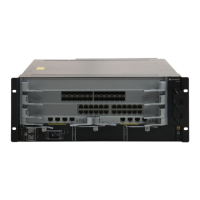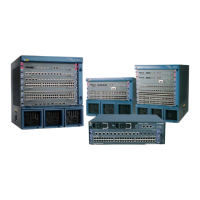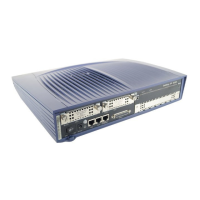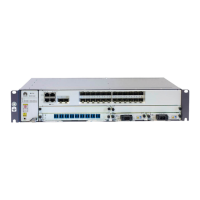As shown in Figure 10-14, Multiple Layer 2 switching devices at the access layer and
aggregation layer form a ring network to access the core layer. RRPP has been configured at the
aggregation layer to eliminate loops. In this case, SEP needs to run at the access layer to
implement the following functions:
l When there is no faulty link on the ring network, SEP helps to eliminate loops.
l When a link fault occurs on the ring network, SEP helps to rapidly restore the
communication between nodes.
l The function of advertising topology changes should be configured on an edge device in a
SEP segment. This helps an upper-layer network to detect topology changes of a lower-
layer network in time.
After receiving a message indicating topology changes of a lower-layer network, a device
on an upper-layer network sends TC packets locally to instruct the other devices to clear
associated MAC addresses and relearn MAC addresses after the topology of the lower-
layer network changes. This ensures nonstop traffic forwarding.
Configuration Roadmap
The configuration roadmap is as follows:
1. Configure basic SEP functions.
(1) Configure the segment with the ID of 1 and the control VLAN with the ID of 10 on
PE1, PE2 and LSW1 to LSW3.
(2) Add PE1, PE2 and LSW1 to LSW3 to a SEP segment, and configure the roles of the
interfaces that reside on PE1 and PE2 and are added to SEP segment.
(3) Set an interface blocking mode on a primary edge interface to specify an interface to
block.
(4) Configure the SEP preemption mode to ensure that the user-defined blocked interface
takes effect when a fault is cleared.
(5) Configure the function of advertising the topology change of a SEP segment so that
the topology change of the local SEP segment can be advertised to the upper-layer
network where RRPP is enabled.
2. Configure basic RRPP functions.
(1) Add PE1 to PE4 to a rrpp domain with the ID of 1, create a control VLAN with the
ID of 5 on PE1 to PE4, and configure a protected VLAN.
(2) Configure PE1 as the master node and PE2 to PE4 as the transmit node of the major
ring, and configure the primary interface and secondary interface of the nodes.
(3) Create a VLAN on PE1 to PE4, and then add the interfaces on the RRPP ring network
to the VLAN.
3. Configure a VLAN on PE3 and PE4 to transmit VRRP packets and BFD packets.
Data Preparation
To complete the configuration, you need the following data.
l SEP segment ID, control VLAN ID, roles of interfaces added to the SEP segment, interface
blocking mode, and SEP preemption mode.
l RRPP domain ID, RRPP ring ID and control VLAN ID.
Quidway S7700 Smart Routing Switch
Configuration Guide - Ethernet 10 SEP Configuration
Issue 01 (2011-07-15) Huawei Proprietary and Confidential
Copyright © Huawei Technologies Co., Ltd.
551

